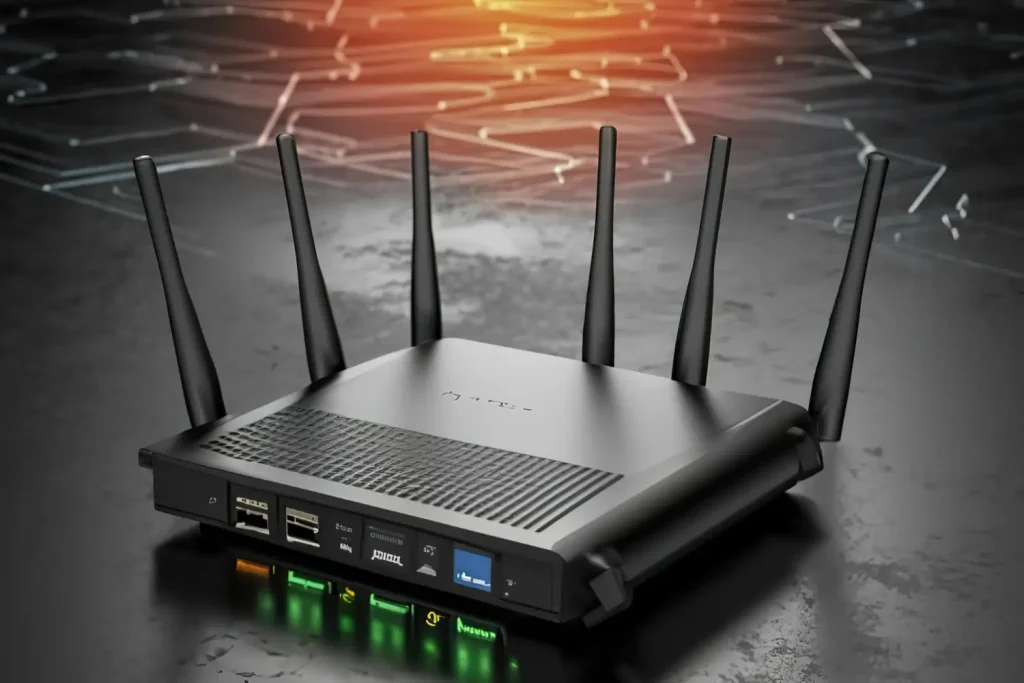Understanding the Different Types of Wireless Access Points
In today’s technology-driven world, wireless access points (WAPs) are pivotal in ensuring that homes and businesses remain connected. As the demand for seamless internet connectivity grows, understanding the different types of wireless access points becomes essential for optimizing network performance. WAPs serve as critical devices that enable wireless devices to connect to a wired network, expanding the range and functionality of wireless networks in both residential and commercial settings.
Wireless access points come in various forms, each designed to meet specific networking needs. From simple home Wi-Fi systems to sophisticated enterprise-level solutions, the diversity in WAP types allows users to select a model that caters to their unique requirements. This article aims to shed light on the various types of wireless access points, their unique features, and best-use scenarios. Whether you are a homeowner looking to improve your digital experience or a business owner seeking to enhance connectivity across multiple locations, knowledge of WAP types will enable you to make informed decisions.
Moreover, as technology continues to evolve, so do wireless access points. Recent advancements, such as Wi-Fi 6 and the introduction of mesh networking systems, have transformed the landscape, providing enhanced speed and capacity. Understanding these developments and their implications helps users ensure they invest in the right equipment that supports their current and future networking needs. In this guide, we will differentiate between various types of WAPs and discuss the scenarios where each type shines.
Ready to dive into the world of wireless access? Let’s explore the different types of wireless access points available today and discover how they can effectively address your connectivity challenges.
Standard Wireless Access Points
The most common type of wireless access point is the standard WAP, which serves as a basic means of extending wireless coverage within a specific area. Typically used in homes and small offices, standard WAPs connect directly to a router via an Ethernet cable and broadcast a wireless signal within a designated range. These devices provide straightforward solutions for enhancing Wi-Fi coverage, enabling multiple devices to access the internet simultaneously.
One of the defining features of standard wireless access points is their simplicity. They usually involve minimal configuration, allowing users to set them up quickly. Users can connect their WAPs to a home router, configure the SSID (service set identifier) and password, and enjoy extended wireless coverage. Many models support both 2.4 GHz and 5 GHz frequency bands, which aid in balancing the network load and reducing interference, thus ensuring optimal performance.
However, it’s essential to recognize some limitations with standard wireless access points. They may not be ideal for larger spaces or environments where multiple floors or walls inhibit signal strength. Moreover, as the number of devices connected to the network increases, standard WAPs can struggle to maintain performance. Users looking to cater to extensive coverage areas or high-density environments should consider alternative types of wireless access points, such as those equipped with mesh networking capabilities.
Mesh Wireless Access Points
Mesh wireless access points have gained notoriety in recent years for their ability to provide seamless whole-home coverage. Unlike standard WAPs, which operate as standalone devices, mesh systems comprise multiple nodes that work together to form a unified Wi-Fi network. This collaborative approach allows for a broader and more reliable Wi-Fi coverage, significantly reducing dead zones that may occur in large homes or offices.
Setting up a mesh wireless system typically involves placing multiple nodes strategically throughout the property. Each node communicates with the others to extend the signal without the need for complicated configuration. One of the primary benefits of mesh systems is their ability to self-optimize; if one node experiences interference, the system reroutes traffic through the best available node, maintaining connection quality seamlessly. Many modern mesh systems also incorporate advanced features, such as parental controls, guest networks, and easy app-based management.
However, potential buyers should consider that mesh access points may come at a higher price point than standard WAPs. Additionally, while they provide extensive coverage, their performance can be influenced by the number of walls and other obstacles present in a home or office. Despite this, for users seeking a robust solution to eliminate Wi-Fi dead spots and ensure a consistent experience across multiple devices, mesh wireless access points represent a compelling option.
Outdoor Wireless Access Points
Outdoor wireless access points are designed to provide extended wireless coverage in open spaces, such as gardens, parks, and outdoor venues. These WAPs are specifically built to withstand harsh weather conditions and feature enhanced antennas for long-range connectivity. Outdoor access points serve as an integral part of network solutions for businesses and organizations that require reliable outdoor internet access.
A notable aspect of outdoor wireless access points is their design, which often includes features such as weatherproof casing and high-gain antennas. These capabilities allow outdoor WAPs to transmit signals over large distances, ensuring connectivity in expansive areas. Moreover, many outdoor models support Power over Ethernet (PoE), which simplifies installation by allowing them to receive power and data through a single Ethernet cable. This eliminates the need for additional electrical installation and makes placement more flexible.
Despite their advantages, outdoor wireless access points can sometimes present challenges when integrating with a pre-existing network, particularly in terms of configuration and potential interference from local structures or geographical features. Additionally, proper planning is essential to ensure that anticipated coverage areas are adequately serviced. Nonetheless, for businesses or homeowners wanting a reliable wireless connectivity solution for outdoor activities, events, or gatherings, outdoor wireless access points are an excellent choice.
Power over Ethernet (PoE) Wireless Access Points
Power over Ethernet (PoE) wireless access points provide a unique advantage by allowing network cabling to transmit both data and power simultaneously. This feature can be highly beneficial in situations where it is challenging to access a power outlet for a WAP installation. PoE eliminates the need for separate power supplies, streamlining the installation process and offering greater flexibility in placement.
PoE access points are ideal for environments where aesthetic considerations or logistical challenges make conventional installations problematic. For example, mounting WAPs on ceilings or outdoor poles becomes much easier with PoE technology, as only a single Ethernet cable is needed. Furthermore, the ability to offer power over the same connection means organizations can prioritize deployment locations based on network coverage needs rather than power availability.
However, users should ensure that their network switches also support PoE or invest in PoE injectors to take advantage of this solution. While PoE wireless access points offer significant installation flexibility, they can be somewhat more expensive than traditional models due to the additional functionalities. That said, for businesses looking to streamline setups and reduce installation complexity without sacrificing performance, PoE wireless access points represent a practical and efficient choice.
Conclusion
Understanding the different types of wireless access points is vital for optimizing your network’s performance and ensuring robust connectivity across various environments. From standard WAPs that provide basic coverage to advanced mesh systems that eliminate dead zones, each type serves unique purposes tailored to meet specific user needs. Whether you require extensive coverage for larger spaces or a reliable outdoor solution for activities in gardens or parks, selecting the right wireless access point is essential for achieving seamless connectivity.
Moreover, as technology continues to evolve, features such as Power over Ethernet (PoE) and the advancement of mesh networking are altering the landscape of network solutions. By being informed about these advancements, users can make educated decisions that allow them to take full advantage of the capabilities wireless access points have to offer. Diving into the various WAP types also provides insight into the advantages and limitations associated with each option, enabling users to align their networking strategies with their specific requirements.
In conclusion, enhancing your understanding of wireless access points can make a significant difference in the quality and reliability of your internet connectivity. By choosing the right type of WAP, you can ensure that your home or office is equipped to handle the demands of multiple devices, streaming services, and online activities. As you navigate the options available, keep in mind your unique environment, budget, and performance criteria to ensure that you select the perfect solution tailored to your needs. With the right knowledge and tools, you can create a network that provides robust coverage, ensuring seamless connectivity across all areas of your living or working space.




